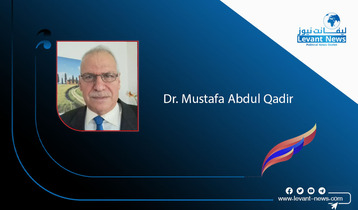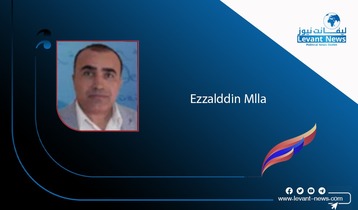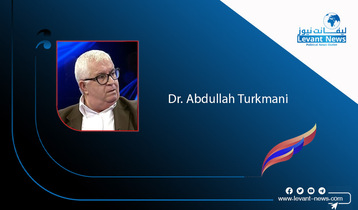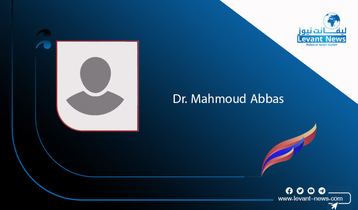-
The Escalating Economic Crisis in Iran and Its Impact on the Population

Iran is facing a severe economic crisis characterized by soaring inflation, a collapsing currency, and persistent poverty. As international sanctions intensify and government resources are diverted to support regional conflicts, including the ongoing Gaza crisis, the Iranian people are confronting increasing hardships. With an unpredictable currency market and the daily fluctuations of the rial against the dollar, Iranians find themselves recalculating their expenses in anticipation of the continued depreciation of their currency.
**Rising Poverty and the Disappearance of the Middle Class**
As economic instability grows, a report from the Parliamentary Research Center indicates that more than a third of Iranians, nearly 30 million people, now live in abject poverty, struggling to meet basic needs. Daily life has significantly changed for the average Iranian; luxuries such as travel, dining out, and entertainment have been deemed non-essential. For many, the only priority is securing shelter, while food and other necessities come second. Meat, chicken, and even fruits have become rare purchases, as rental costs dominate family budgets.
**Currency in Freefall**
For years, Iranians have lamented that they "earn in rials but spend in dollars," as fluctuating exchange rates severely impact purchasing power. Since Masoud Bezhakian's government took office, while promising economic improvement without any sign of realization, the dollar reached record levels, with the exchange rate recently hitting 66,500 tomans. Regional tensions have compounded currency pressures, especially following the Israeli strike on the Iranian consulate in Damascus in April 2024. With the rial losing over 10% of its value in the wake of these tensions, economic difficulties have deepened as the region faces the potential for broader conflict.
**Uncontrolled Inflation and an Unpredictable Market**
The cascading effects of the rapid increase in the dollar’s value have made essential goods unpredictably expensive. Food prices have surged in recent months, regardless of the already high inflation rate in the country. Vendors in markets are now adjusting prices daily, and consumers have grown accustomed to this persistent increase. Traders report that establishing stable prices has become impossible, and many consumers express a preference for gradual, predictable price hikes over the current erratic changes.
**Rising Living Costs in Iran's Capital**
The Iranian Statistical Center recently reported a staggering increase in living costs, especially in urban areas. Annual living costs in Tehran have reached 330 million tomans, pushing many middle-income families to the brink of poverty. Rising rents, the surging dollar, and inflation have forced thousands to abandon urban life and move to suburban areas. These shifts have created new living arrangements as people cope with housing costs by renting shared spaces, overpriced rooms, or even resorting to sleeping on buses or rooftops. Social media occasionally reveals such desperate conditions, although state media routinely denies their existence.
**Deteriorating Food Insecurity and Malnutrition**
According to a recent report from the government website "Entekhab," food insecurity is now widespread, with eight provinces facing acute shortages. In Sistan and Baluchestan, approximately 70% of the population suffers from food insecurity, and malnutrition rates among children have risen. Khuzestan and Sistan and Baluchestan are particularly hard-hit, with 58% and 50% of children, respectively, facing health issues related to malnutrition. Per capita meat consumption has dropped to just five kilograms, far below the global average of 30 kilograms. Yet, while domestic demand for dairy products falls, Iran continues to export dairy goods, highlighting a paradox of scarcity amid rising prices.
**Minimum Wage Insufficient for Basic Needs**
The disparity between the minimum wage and the cost of living is staggering. In September 2024, the monthly cost of a basic living basket exceeded 36 million tomans, while the minimum wage for official workers remains just 7 million tomans. This gap leaves most families unable to cover essential expenses, forcing many to rely on loans or government aid to meet their daily needs.
**Rising National Debt and Financial Crisis**
The regime's economic policies have exacerbated the crisis. The Iranian Minister of Economy recently revealed a budget deficit of 850 trillion tomans, with government debt to banks reaching 1,600 trillion tomans. The country's liquidity has now surpassed 9 trillion tomans, a level indicative of deeper economic distress. This unsustainable financial landscape places additional pressure on the Iranian economy, leaving little room for improvement in living standards and increasing the likelihood of further economic decline.
**Conclusion**
The Iranian economy is in dire straits, facing a volatile currency, rampant inflation, and a crushing cost of living that has plunged millions into poverty. With sanctions tightening and government resources being depleted due to foreign interventions, the people of Iran confront a bleak economic future. Promises made by the government to alleviate economic pressures have yet to be realized, leaving residents in a state of rapid deterioration of quality of life and an uncertain future.
**Levant: Mahmoud Hakmian**
You May Also Like
Popular Posts
Caricature
BENEFIT Sponsors BuildHer...
- April 23, 2025
BENEFIT, the Kingdom’s innovator and leading company in Fintech and electronic financial transactions service, has sponsored the BuildHer CityHack 2025 Hackathon, a two-day event spearheaded by the College of Engineering and Technology at the Royal University for Women (RUW).
Aimed at secondary school students, the event brought together a distinguished group of academic professionals and technology experts to mentor and inspire young participants.
More than 100 high school students from across the Kingdom of Bahrain took part in the hackathon, which featured an intensive programme of training workshops and hands-on sessions. These activities were tailored to enhance participants’ critical thinking, collaborative problem-solving, and team-building capabilities, while also encouraging the development of practical and sustainable solutions to contemporary challenges using modern technological tools.
BENEFIT’s Chief Executive Mr. Abdulwahed AlJanahi, commented: “Our support for this educational hackathon reflects our long-term strategic vision to nurture the talents of emerging national youth and empower the next generation of accomplished female leaders in technology. By fostering creativity and innovation, we aim to contribute meaningfully to Bahrain’s comprehensive development goals and align with the aspirations outlined in the Kingdom’s Vision 2030—an ambition in which BENEFIT plays a central role.”
Professor Riyadh Yousif Hamzah, President of the Royal University for Women, commented: “This initiative reflects our commitment to advancing women in STEM fields. We're cultivating a generation of creative, solution-driven female leaders who will drive national development. Our partnership with BENEFIT exemplifies the powerful synergy between academia and private sector in supporting educational innovation.”
Hanan Abdulla Hasan, Senior Manager, PR & Communication at BENEFIT, said: “We are honoured to collaborate with RUW in supporting this remarkable technology-focused event. It highlights our commitment to social responsibility, and our ongoing efforts to enhance the digital and innovation capabilities of young Bahraini women and foster their ability to harness technological tools in the service of a smarter, more sustainable future.”
For his part, Dr. Humam ElAgha, Acting Dean of the College of Engineering and Technology at the University, said: “BuildHer CityHack 2025 embodies our hands-on approach to education. By tackling real-world problems through creative thinking and sustainable solutions, we're preparing women to thrive in the knowledge economy – a cornerstone of the University's vision.”
opinion
Report
ads
Newsletter
Subscribe to our mailing list to get the new updates!






















